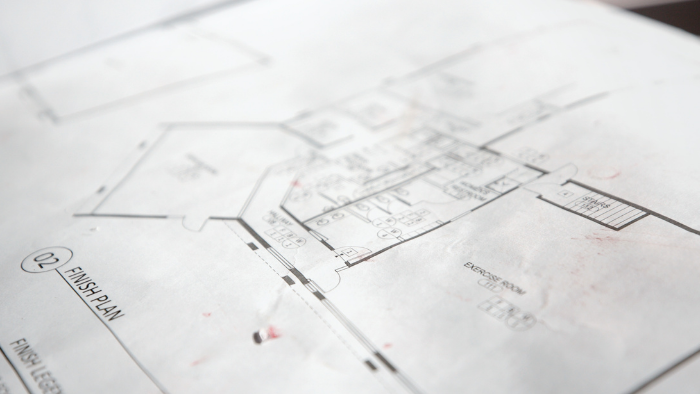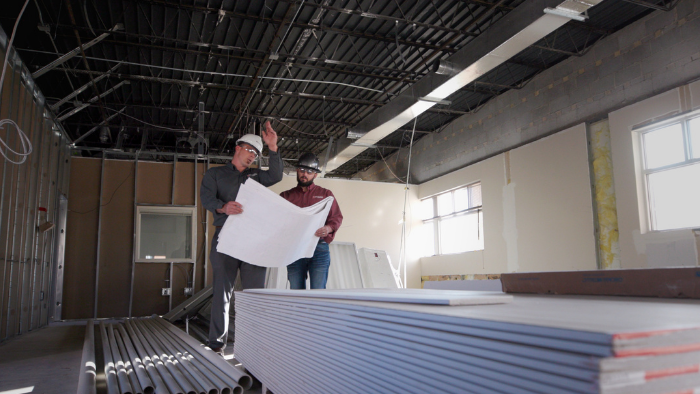The right commercial building design can make your business stand out. However, selecting which design elements or modifications to employ when constructing a commercial building can be challenging with a myriad of options at your disposal.
Designing a commercial building is expensive. A balance is required between the imagination and the budget of the project. Making the most out of your budget is critical to the process, while ensuring that the design is safe, fully functional, and aesthetically pleasing.

Several key elements need to be considered when planning construction for your commercial building.
Space
Maximizing your interior and exterior building space is critical to staying within your budget and ensuring that the final design layout is neither too crowded nor too spread out.
In certain circumstances, targeted advance planning is appropriate. Intentionally blocking off interior spaces to be used for special purpose rooms (conference rooms, classrooms, etc.), furniture, decor, or equipment might be required.
Lines/Alignment
Lines are indicators of boundaries in interior spaces, or the edges of surfaces. In building design, lines are used to draw attention to desired focal points within a space.
You can use lines to your advantage by situating them to draw customers’ attention to your company logo or central conference room.
Lighting
Lighting is partially responsible for setting the mood in any given space. With commercial building spaces, the brightness must be designed to optimize the work environment. Not enough or too much light can negatively impact employee productivity and the appearance of the space.
Research shows that if you want to improve employee productivity with lighting, you will want to use blue-enriched lightbulbs, which support mental acuity and promote alertness.
Color Palette
Color selection also contributes to setting the mood of a space. Your optimal color scheme will depend on the type of business you have, and should typically complement your company’s brand and culture. Ultimately, the color within the space can be adjusted to meet your specifications.
Soft hues and pastel colors are often used for the walls of commercial buildings, as they create a striking contrast to common dark furniture styles. Neutral colors, like gray, can bring a sense of calm and help blend technology in with the space.
Texture
Texture can also be used to enhance a space’s design concept and style. It helps differentiate between objects and surfaces, transforms light, and influences scale. Texture alters the atmosphere and adds emotional attributes and an extra dimension to a space.
For instance, a ”resimercial” design will make your office space feel more welcoming, especially when paired with surfaces made of wood or metal.
Patterns
Patterns help to tell a story about a company’s culture and add a certain continuity to a commercial space. For example, restaurants use patterns well to create the desired feel that fits with the theme of the business.
You can’t mistake the vibrant red and yellow patterns inside a McDonald’s fast-food restaurant, which are based on the company’s belief that “people eat with their eyes first.”

Forms
Forms are shapes that add balance to a commercial space. Form refers to the shape or configuration of an object and relates closely to the space it’s in. The placement of an object in relation to its neighboring forms is crucial to define any space.
A balanced interior will include both closed and open forms, as well as a mix of organic and geometric shapes.
Versatility
Change is inevitable, so why not plan for it? Versatility in a space’s design allows for easy and convenient changes in the future, such as physically rearranging workspaces and furniture as staff are hired or departments reconfigured. This is a cost-friendly solution as compared to the alternative: renovations.
Furniture
Choosing dark pieces of furniture, specifically black, is common because it has a professional appearance and contrasts well with brightly colored walls.
Technology
You can incorporate technology to modernize and improve the functionality of your commercial building space. Technology promotes a sense of style and aesthetic that can be shown off to customers. For example, a building automation system (BAS) optimizes comfort and energy efficiency.
Additionally, you can use technology to your advantage by devoting specific rooms to equipment, such as rooms containing teleconference screens or digital whiteboards.
Last, you can make your building a convenient space to work in by installing additional outlets and plugs in walls, floors, and tabletops.
More Hot Design Trends in Commercial Building Today
We’re all looking for a breath of fresh air. Especially in a post-pandemic world, you’ll want to do your best to incorporate nature into your design plans.
- Bring nature in. Adding greenery, wood, or stone brings life to your interior space.
- Expand the outdoor space. Depending on the type of business, consider adding a patio, terrace, or extended outdoor break area to your building plans.
- Go eco-friendly. Put the environment first by installing a building automation system (BAS), LED lightbulbs, energy-efficient appliances, and solar panels.
Kroeschell Construction Can Help You Design the Perfect Space
Whether you’re exploring a new commercial building project or simply have questions related to commercial building design, know that you don’t have to go through the process alone.
Lean on Kroeschell’s commercial design and building services to help you plan and construct your next commercial building space.
Before you dive into your next commercial building project, get in touch with us to make sure that you’re up to date on the latest trends in commercial building design.

